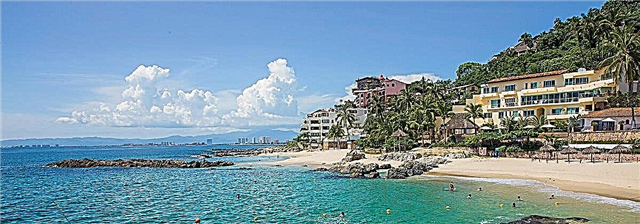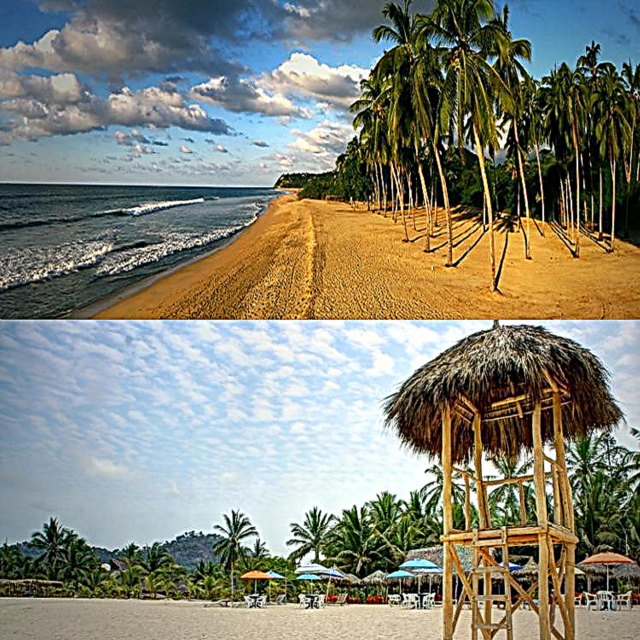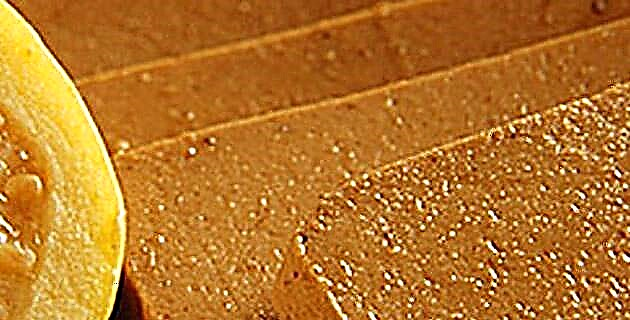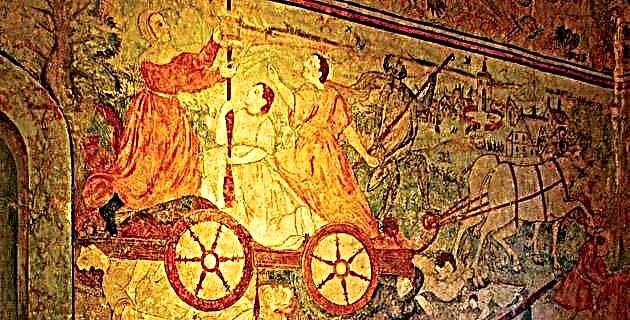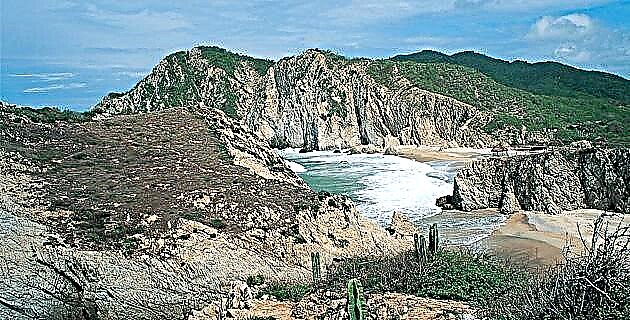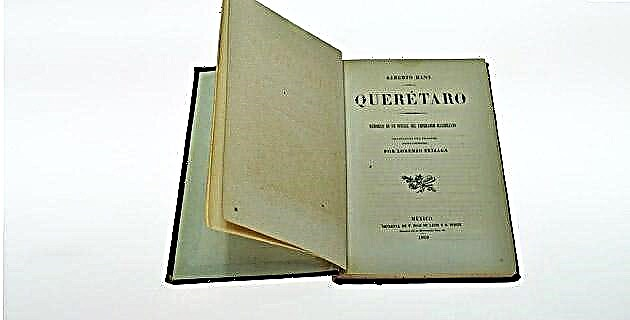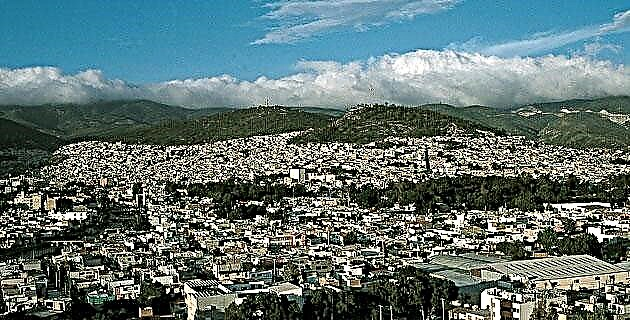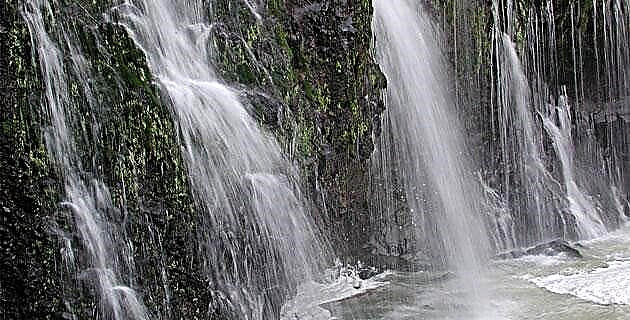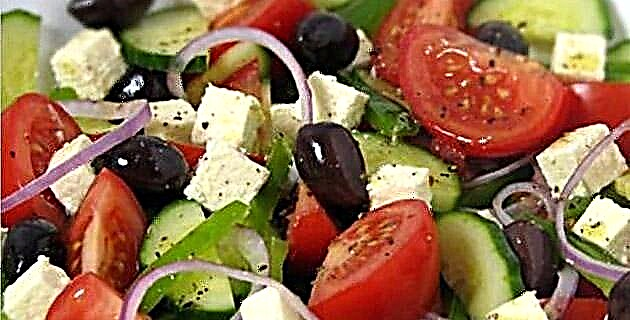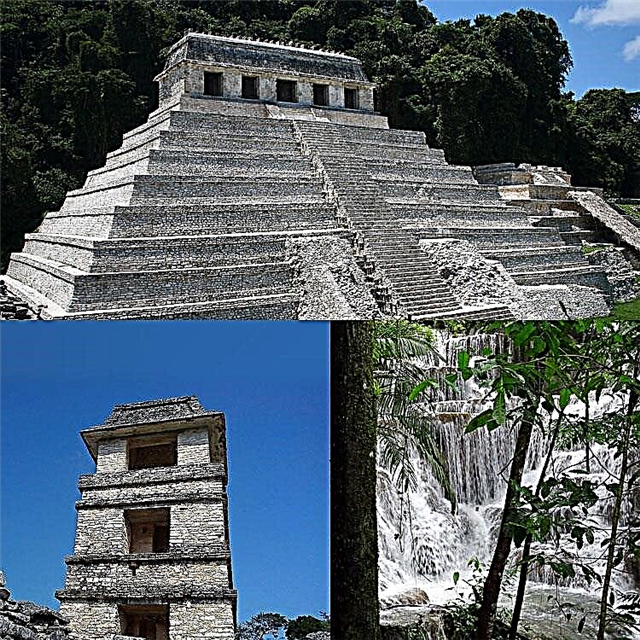Palenque and its surroundings are a tourist destination to enjoy three types of dives: one in archeology and history, another in its beautiful and delicious bodies of water, and another in its succulent cuisine. We invite you to know the Magic Town Chiapaneco with this complete guide.
1. Where is Palenque located and how did I get there?
Palenque is a Chiapas city of Mayan origin, head of the municipality of the same name located in the north of the state. The indigenous population is mainly made up of the Chol, Tzeltal and Lacandon ethnic groups. The municipality borders Guatemala to the southeast, has three border sectors with the state of Tabasco and is also a neighbor of the Chiapas municipal entities of Catazajá, La Libertad, Ocosingo, Chilón and Salto de Agua. The closest cities to Palenque are Villahermosa, Tabasco, located 145 km to the west and San Cristóbal de las Casas, which is 219 km to the south.
2. How did Palenque come about?
The pre-Columbian city of Palenque was built during the Classic Period, which began in the middle of the third century after Christ, beginning one of the most powerful and outstanding Mayan dynasties in history, due to the quality of its constructions and the beauty of its art. The Hispanic town was founded in 1567 by the Spanish Dominican friar Pedro Lorenzo de la Nada, who managed to integrate the Chole Indians. The valuable archaeological zone was discovered in 1740 and in 1813 the Cortes of Cádiz elevated Palenque to the category of town; the title of city was awarded in 1972 and that of Pueblo Mágico in 2015.
3. What type of climate does the Magic Town have?
Palenque has a tropical, hot, humid and rainy climate. The annual average temperature is 26.6 ° C; which rises to almost 30 ° C in May, the hottest month, and subsides a little in winter, when the thermometer reads 23 ° C in January. The heat can rage up to 36 ° C at times, while during cool highs, the temperature never drops below 17 ° C on the coldest winter nights. In Palenque it rains a lot, an average of 2,394 mm per year and in any month there can be a downpour, although the most marked rainfall season is between June and October.
4. What are the main tourist attractions of Palenque?
Palenque is a fundamental place in the pre-Columbian history of Mexico for the size, majesty, quality of the constructions and talent displayed in its multiple artistic manifestations. The imposing Mayan city is a must for every Mexican lover of the country's history and is one of the most frequented sites by international archaeological tourism and by world specialists in the field. To round off the visit to the archaeological site, you must take a tour of the Alberto Ruz Lhuillier Site Museum.
A little overshadowed by the fame of Palenque, near the city are other sites of great importance, such as Bonampak, Yaxchilán and Toniná. And since everything cannot be archaeological ruins, Palenque and its surroundings offer charming natural attractions for outdoor recreation, such as the Aluxes Ecopark, the Agua Azul Waterfalls, the Misol Ha Waterfall and the Agua Clara Spa. Another place of interest near Palenque is the small town of Catazajá.
5. What is the importance of the Archaeological Zone of Palenque?
The archaeological site of Palenque is one of the most impressive of the Mayan culture, although it has only been explored and excavated in a small fraction of its extension. It is believed that more than a thousand structures are still buried in the thicket and those uncovered represent a remarkable display of the constructive and artistic skills of the Maya. It was built during the Classic Period, abandoned before the conquest and rediscovered in the 18th century. In what has been discovered so far, the Temple of the Inscriptions, the Palace, the Set of Crosses, the Aqueduct and other buildings stand out. Palenque has the categories of National Park and World Heritage Site.
6. Why is the Temple of the Inscriptions distinguished?
It is located in an area known as the Great Plaza, on a natural slope. It was started by the famous Mayan ruler Pakal the Great and completed by his son in the 80s of the 7th century. It receives its name from the superb amount of hieroglyphic texts and stucco reliefs that have made a fundamental contribution to the understanding of the Mayan civilization. In 1949 the tomb of Pakal was found under the temple. The building is an 8-level step pyramid and a temple that represent the 9 levels of the Mayan underworld, measuring 22.8 meters in height in total.
7. What is El Palacio like?
This splendid building has an area of about half a hectare, measuring 85 meters from north to south and 60 meters from east to west. It has wide stairways on three of its facades and was erected by Pakal on the remains of previous constructions. In the center of the Palace stands a four-section tower built entirely in masonry and with thick pillars, which is believed to have been used for defensive surveillance, although another version indicates that it may have had astronomical purposes. Its spacious patios, the number of rooms and the large decorated galleries indicate that it was the scene of great splendor.
8. What stands out in the Conjunto de las Cruces?
It is made up of three main buildings: the Temple of the Cross, the Temple of the Foliated Cross and the Temple of the Sun. All three were characterized by having been erected on stepped pyramids and by their reliefs. A dead king put king! the saying goes. The ensemble was erected to honor Chan Bahlum II on his accession to the throne after the death of Pakal the Great. The name of Las Cruces is inappropriate, since in fact the temples are representations of the tree of creation according to Mayan mythology. From the Temple of the Cross, the central panel was removed with the representation of a monster from which a corn plant sprouts, which is preserved in the National Museum of Anthropology.
9. What stands out in the Aqueduct?
It is a vaulted structure, three meters deep, that guides the waters of the Otulum River below the main square, on the eastern side of the Palace. Downstream, at the site called Bath of the Queen, there is a stone bridge. The Mayans were very skilled in building water supply systems; In July 2016 the National Institute of Anthropology and History announced the discovery of a complex hydraulic system under the tomb of Pakal the Great. It is believed that it could be related to an inscription engraved on the ruler's tomb, which indicates that to enter the underworld he had to submerge himself in water.
10. Are there other buildings of interest in Palenque?
The Temple of the Count has a somewhat extravagant history, since in pre-Hispanic Mexico there were no counties. It receives that name because it was the dwelling place of the French explorer and artist Jean-Frédéric Waldeck, when he spent a season in Palenque in the 1820s; Waldeck called himself an earl. The Temple of the Count is accessed through a sloping staircase. The Temple of the Lion had a neat bas-relief, sadly destroyed, with a king with a throne in the form of a two-headed jaguar.
11. What does the Alberto Ruz Lhuillier Site Museum show?
This museum located in the archaeological site bears the name of the Franco-Mexican archaeologist Alberto Ruz Lhuillier, a notable researcher of Mesoamerican Mayan cities and discoverer in the mid-20th century of the tomb of Pakal the Great in the Temple of the Inscriptions in Palenque. The sample exhibited is made up of pieces rescued from the site itself, explanatory models and other aids. Among the most relevant objects are ceramics, funeral ornaments, boards and ceremonial offerings, various sculptures, the death mask of Pakal the Great and that of the so-called Red Queen, a woman who is supposed to be Ahpo-Hel, the wife of the famous ruler.
12. What is the most interesting thing about the Bonampak Archaeological Zone?
If you made the trip to Palenque, it is worth traveling 150 km. further southeast to discover the interesting Bonampak Archaeological Zone, in the heart of the Lacandon Jungle. The great attraction of this Mayan site near the border with Guatemala are its wall paintings, made during the 8th century. The paintings are a very prolific testimony of episodes in the life of the Mayans. The magnificent images include craftsmen at work; musicians playing flutes, drums and other instruments; dances, war scenes and prisoners prepared for sacrifice.
13. What is the relevance of the Yaxchilán Archaeological Zone?
165 km. To the southeast of Palenque is this other archaeological site, located in front of a bank of the Usumacinta River. Yaxchilán was an important center of Mayan power during the Classic Period, exercising dominion over Bonampak and rivaling Piedras Negras. The site is distinguished by its artistic wealth, especially the sculpted stones on the door lintels, and by the hieroglyphic texts that provided valuable information on the history of the city and its government dynasties. Other impressive structures are the stelae, the Great Plaza, and the Great Acropolis.
14. Where is the Toniná Archaeological Zone located?
This Mayan archaeological site that we also recommend you visit is located 115 km from Palenque, near Ocosingo. Toniná lived its time of splendor between the 7th and 9th centuries and 7 large platforms have been preserved. On the third platform, the Palace of the Underworld stands out; in the fourth the Palace of the Grecas and the War is distinguished; the sixth platform contains the Mural of the Four Suns, an allegory of the Four Cosmic Ages; and on the seventh platform the Temple of the Prisoners and the Temple of the Smoking Mirror stand out, the highest in Mesoamerica. Toniná has splendid artistic manifestations, mainly stone and stucco high reliefs, and two-sided architectural coverings in the shape of isosceles triangles.
15. What can I do at the Aluxes Ecopark?
It is a park and wildlife refuge that develops an authentically environmental concept, favoring the maximum interaction of visitors with animals. It is located near the archaeological ruins and is largely fed by the seizures of animals at risk made by the authorities. There you can feed crocodiles and manatees, as well as be in contact with baby crocodiles, scarlet macaws and giant tortoises. They also offer boat rides and guided day and night tours for groups of at least 4 people. They are open every day of the year between 9 AM and 4:30 PM.
16. How close are the Agua Azul Falls?
These waterfalls, for many the most beautiful in Mexico, are located in a flora and fauna protection area located in the Chiapas municipality of Tumbalá, 64 km from Palenque. The precious turquoise blue of the waters is communicated by the carbonate particles in suspension, and together with the white of the foam and the green of the vegetation, it forms a vignette of incomparable beauty. The current descends in a staggered manner, forming waterfalls and natural pools in which it is a delight to submerge. The mineral-rich waters also petrify tree trunks that are common to see on the banks or in the middle of the stream.
17. What is the Misol Ha Waterfall like?
This 30 meter high waterfall is 20 km from Palenque; falls forming a well in which you can swim taking the proper precautions. The stream forms several waterfalls in the middle of the dense vegetation and was one of the locations of the famous film Predatorstarred by Arnold Schwarzenegger and shot entirely on Mexican stages. The area of the waterfall is managed by a community of ejidatarios that also offers ecological accommodation. The chol term "Misol Ha" means "sweep or fall of water."
18. What are the attractions of the Agua Clara Spa?
It is an ecotourism park located 55 km from Palenque on the way to the Agua Azul Waterfalls on Highway 199. The water current is formed by the contribution of a network of rivers among which are the Shumulhá or Agua Clara, the Tulijá, Michol, Bascam and Misol Ha. In the body of water and its surroundings you can practice entertainment such as swimming, boating, horseback riding and hiking. In the exuberant flora it is possible to admire plants such as avocado, red sapodilla, arnica, begonia, wild chincuya, bamboo and copal. A little more difficult it will be for you to see a white-tailed deer or a tepescuintle, two of the main representatives of the fauna of the place.
19. What's in Catazajá?
30 km. north of Palenque on Highway 199 is the small town of Catazajá, whose indigenous name means "valley covered with water." Precisely, the main tourist attractions of the place are its bodies of water, especially the Catazajá Lagoon, where you can admire manatees, otters and turtles, and perhaps catch a bass, a carp or a guabina. However, the most interesting fish that lives in the lagoon is the alligator peje, an interesting species both for its role in evolution and for the value of its meat. You might even get one stuffed as a souvenir.
20. What is the craftsmanship of the Pueblo Mágico like?
The artisans of the area, mainly indigenous Choles, Tzeltales and Lacondones, make beautiful and colorful pieces, ranging from regional costumes and garments with embroidery, to bags and leather backpacks. They are also very skilled in working with ceramics, wood, metals, ornamental stones and amber, and in making pyrography on skin. Another craft specialty of the town are the so-called dream catchers or dream catchers, hoops with a net, decorated with light elements, such as feathers. In these confections, the artisans of Palenque use the wide range of colors offered by the plumage of the birds in the area, although the pieces are not exactly very friendly to the environment.
21. What stands out in the gastronomy of Palenque?
The culinary art of Palenque is strongly impregnated by pre-Hispanic cuisine and its emblematic autochthonous elements, such as corn, chili peppers and cocoa. Among the most symbolic dishes of the extensive pre-Columbian gastronomic legacy are shote with momo, a recipe based on river snails, nixtamal dough, and holy grass leaves. Also the duck in chilmol, in which the meat is cooked in a sauce of tomatoes, chili peppers and other ingredients; the old recipe is with wild duck, but due to its scarcity it has had to migrate to the hatchery and chicken.
The venison salpicón, the sweat fish and the typical Chiapas tamales are other delicacies that you cannot miss in Palenque. You will find all these specialties and others of Mexican and international cuisine in the restaurants of Palenque. One of the typical drinks is the tascalate, prepared with chocolate, corn dough and achiote. Likewise, grinder chocolate, pot coffee, chicha, balché and white pozol are common drinks. Among the sweets are those made with honey.
22. What are the main festivals in Palenque?
The fair in honor of Santo Domingo de Guzmán, patron of the town, takes place during the first 10 days of August. For the occasion, the Pueblo Mágico is filled with the joy and color of traditional indigenous dances and the music of marimbas, a percussion instrument similar to the xylophone, whose modern version with double keyboard was invented in 1892 by the musician and architect. Chiapas Heart of Jesús Borras Moreno. As in all of Mexico, in Palenque Holy Week is celebrated, on September 16, the feast of All Saints and the Day of the Dead, and the day of the Virgin of Guadalupe, on December 12.
23. Where can I stay in Palenque?
Hotel Quinta Chanabnal is a beautiful establishment located 2 km from the Archaeological Zone; It is a heavenly place in the middle of the jungle, tastefully decorated and with nice pools. Hotel Chablis Palenque is a clean place with an excellent quality / price ratio. Hotel Maya Tulipanes Palenque is another accommodation with good facilities and careful service. Other options are Misión Palenque, Chan-Kah Resort Village and Hotel Villa Mercedes Palenque.
24. What are the most recommended restaurants?
The Bajlum Restaurant is in line with the renewed pre-Hispanic cuisine; They offer great dishes like white-tailed venison, wild turkey, and peccary. It is a house of enormous reputation in which you will live an unforgettable pre-Columbian gastronomic experience; make your reservation and get the credit cards ready. If exotic meats are not your strong suit, at the Monte Verde Trattoria and Pizzeria you can taste classic Italian cuisine, although lovers of novelties will not be disappointed either. The Maya Cañada Restaurant, the Saraguatos and the Jade Café are other options to eat exquisitely in Palenque.
We hope that this guide will be very useful for you on your trip to Palenque, wishing you have a happy stay among pyramids, temples, waterfalls and dishes. See you at the next opportunity.

